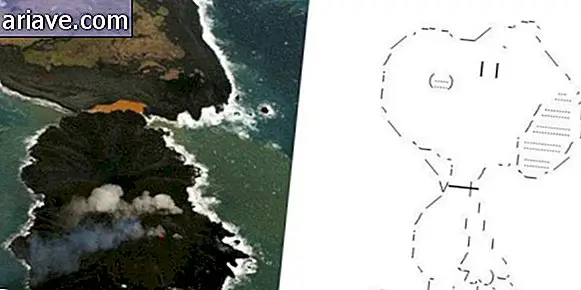Authorities fear explosion of hundreds of whales in New Zealand
You may have seen news in recent days about the hundreds of whales that died on the sands of a New Zealand bay, right? It all started on the night of Thursday, February 9, when more than 400 pilot whales were stranded in an area of the South Island known as Farewell Spit. And it only got worse over the weekend, when about 240 other whales ran aground between Puponga and Pakawau.
According to Bec Crew of Science Alert portal, there was a huge mobilization to try to save the animals, and many actually managed to return to sea. Unfortunately, however, about 250 individuals eventually died - and you know what happens to whale carcasses that are left under the elements, don't you? If you do not know, take a look at this article that we posted on the subject and the following image:

Booom
After seeing the blast above, imagine the situation in Farewell Spit, where there are about 250 whales - most weighing over a ton - rapidly decomposing in the sand! Have you thought about the horror show that will form if they start to explode? Because of this, local authorities decided to ban access to the beach and a small army of people would be tasked with drilling the carcasses.
As already explained here in Mega Curioso, basically, when the animal begins to decompose, it is normal for a gas accumulation inside the body due to the action of bacteria present in the digestive tract. This accumulated gas tends to escape through the mouth or anus, but when it does not, the volume increases and increases until the tissues can take no more pressure and the animal explodes. See what a horror:
Authorities are also considering surrounding the region where dead whales meet to prevent some of them from eventually being dragged by the tide and taken to other beaches. And once the risk of explosions has been overcome, the carcasses are likely to be moved to a dune area in Farewell Spit that is closed to the public so that the decomposition process can run its course.
What the hell happened to the whales?
According to Bec, although scary, this was not the worst case involving whaling in New Zealand. In 1985, 450 animals ended up on the sands of a beach in Auckland, and by 1918, about 1, 000 ran aground on Chatham Islands - and that was the worst incident of its kind in history.
In addition, in 2015 337 whales were found dead after beaching on the Patagonian coast, and in 2016 about 80 animals landed in Bengal Bay off the coast of India. Of these, a total of 36 individuals were returned to the sea, but they were so disoriented that most eventually ran aground again.

Most worryingly, scientists are still trying to figure out how so many whales get stranded like this, and among the theories is that the gravitational influence of the moon could affect their ability to navigate the ocean. More precisely, the researchers suspect that the storms and extreme tides recorded near the full moon leave the whales disoriented, causing them to venture into shallower waters.
In addition, another theory would be that solar storms may be to blame, as they interact with the earth's magnetic field - and whales rely on them to navigate. NASA even announced a few days ago that it will start a study to determine if there is any relationship between solar storms and incidents involving mass beaching of whales.

Finally, in the specific case of this New Zealand incident, Bec explained that Farewell Spit is a difficult place for whales to navigate, as the sandbars do not reflect the sonar signals they send very well. Thus, it seems that the first group accidentally approached and ran aground, and the second group may have come after being attracted by the calls of animals that were already trapped in the sand. Sad is not it?











